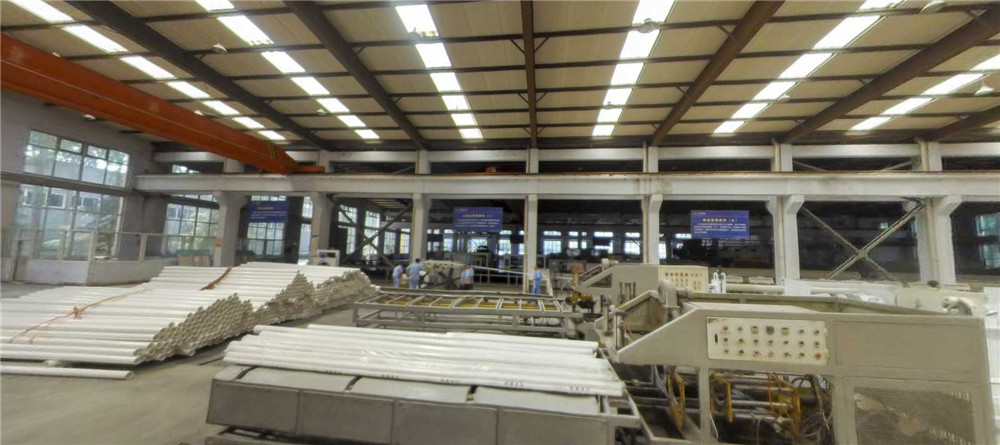Oct . 13, 2024 10:09 Back to list
upvc pipe fitting
Understanding uPVC Pipe Fittings A Comprehensive Guide
uPVC, or unplasticized polyvinyl chloride, has gained significant popularity in the construction and plumbing industries due to its numerous advantages. Unlike traditional materials like metal or PVC, uPVC offers a durable, cost-effective, and environmentally friendly solution for various applications. One of the critical components of uPVC systems is the uPVC pipe fitting, which plays a vital role in ensuring proper connections and functionality within plumbing systems.
What are uPVC Pipe Fittings?
uPVC pipe fittings are specialized connectors used to link sections of uPVC pipes in plumbing and drainage systems. These fittings come in various shapes and sizes, enabling the creation of complex piping networks. Common types of uPVC fittings include elbows, tees, couplings, reducers, and end caps. Each fitting serves a specific purpose, allowing for directional changes, branch connections, size adjustments, and termination of the pipeline.
Advantages of Using uPVC Pipe Fittings
1. Corrosion Resistance One of the most significant advantages of uPVC fittings is their resistance to corrosion. Unlike metal fittings that can rust over time, uPVC is impervious to the effects of water and other chemicals. This property increases the longevity of the fittings, reducing maintenance and replacement costs.
2. Lightweight and Easy to Handle uPVC fittings are significantly lighter than metal equivalents, making them easier to transport and install. This characteristic also reduces the labor costs associated with handling heavy materials.
3. Chemical Resistance uPVC is naturally resistant to a variety of chemicals, making it suitable for various applications, including industrial and agricultural settings. This ensures that the integrity of the pipe system is maintained even when exposed to corrosive substances.
upvc pipe fitting

4. Low Thermal Conductivity uPVC has a low thermal conductivity, which helps minimize energy loss in hot water systems. This feature enhances energy efficiency and reduces utility bills.
5. Easy Installation The installation process for uPVC pipe fittings is straightforward. They can be glued or solvent-welded together, creating strong and leak-free joints. Additionally, due to their versatility, these fittings can be used in various piping configurations.
Applications of uPVC Pipe Fittings
uPVC pipe fittings are commonly used in a multitude of applications, including
- Residential Plumbing They are widely employed for water supply systems, drainage, and sewerage management in homes. - Industrial Usage In industrial settings, uPVC fittings are often used for transporting chemicals, wastewater, and other fluids. - Agricultural Systems Farmers utilize uPVC fittings for irrigation systems, ensuring efficient water distribution across fields. - HVAC Systems uPVC components are also used in heating, ventilation, and air conditioning systems due to their durability and efficiency.
Conclusion
uPVC pipe fittings are an essential component in modern plumbing and construction, offering a blend of durability, efficiency, and cost-effectiveness. Their resistance to corrosion, lightweight nature, and ease of installation make them an ideal choice for various applications. Whether in residential, industrial, or agricultural settings, the reliability of uPVC fittings ensures that water and other fluids are conveyed safely and efficiently. As the construction industry continues to evolve, uPVC fittings will undoubtedly remain a cornerstone of effective plumbing solutions.
-
High-Quality PPR Pipes and Fittings Durable ERA PPR & PVC PPR Solutions
NewsJul.08,2025
-
Black HDPE Cutting Board - Durable, Non-Porous & Food Safe HDPE Plastic Cutting Board
NewsJul.08,2025
-
High-Quality CPVC Panel Durable HDPE & PVC Panels Supplier
NewsJul.08,2025
-
Double PE Welding Rod Supplier - High Strength, Durable & Versatile Welding Solutions
NewsJul.07,2025
-
High-Quality PVC-O Pipe Supplier Durable 75mm PVC Pipe & Connections Leading PVC Pipe Company
NewsJul.07,2025
-
HDPE Drainage Pipe Supplier – Durable & Corrosion-Resistant Solutions
NewsJul.06,2025

